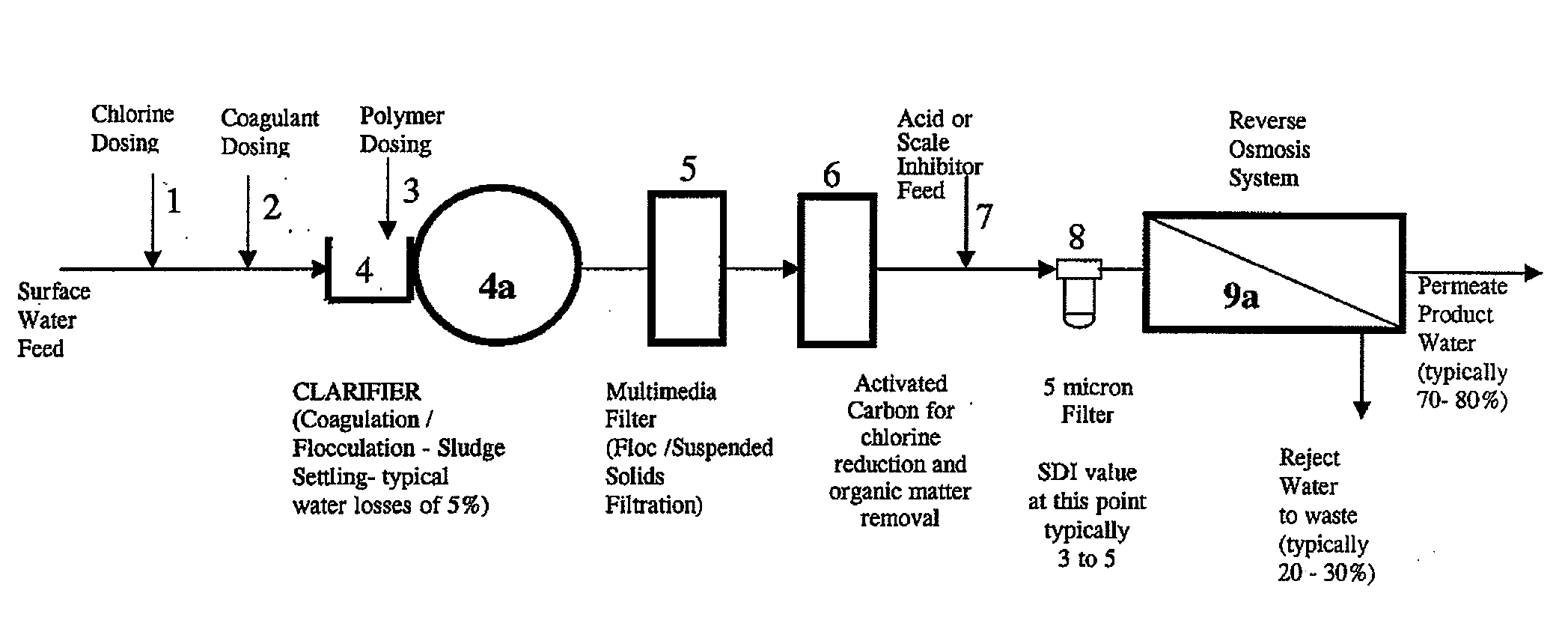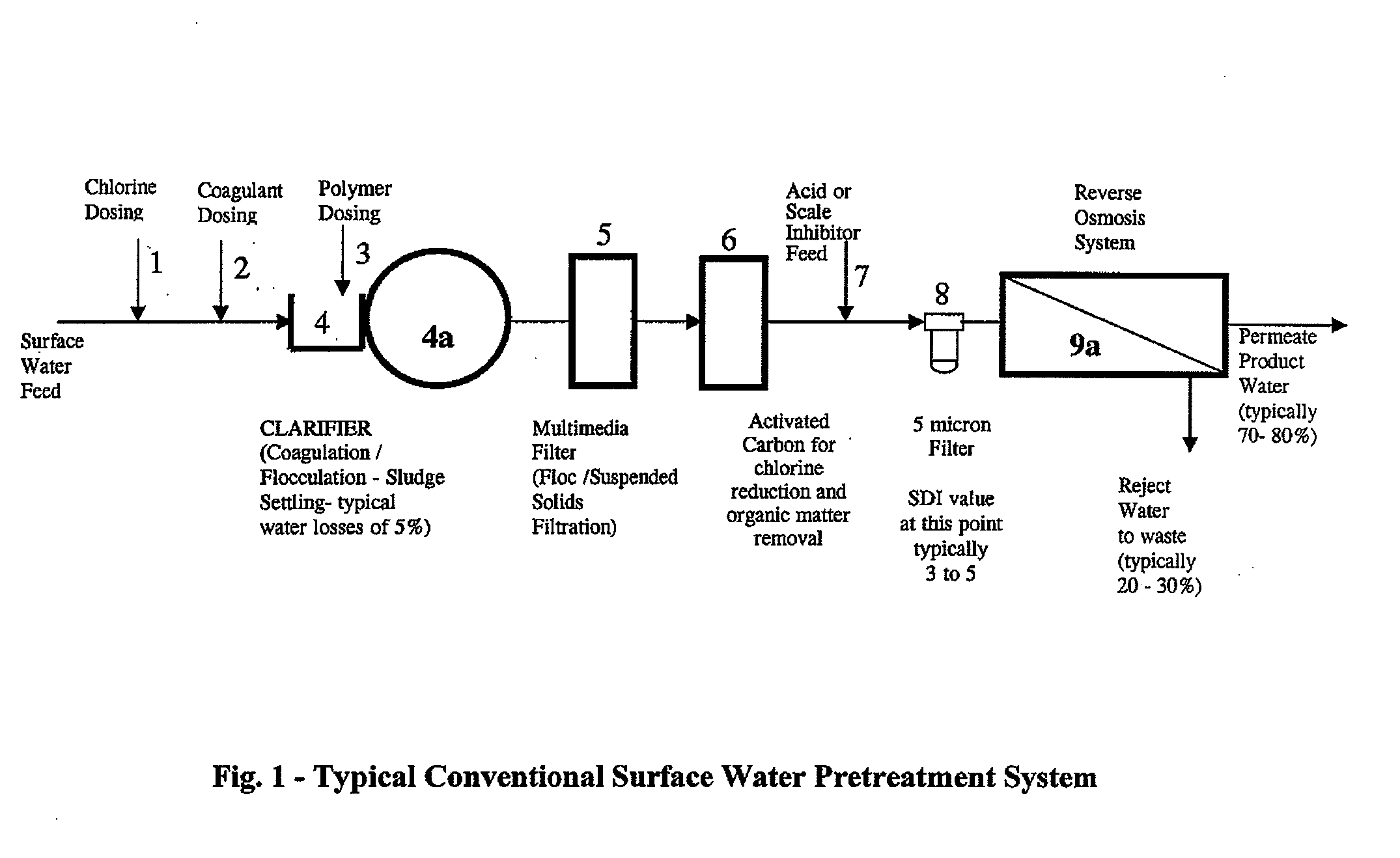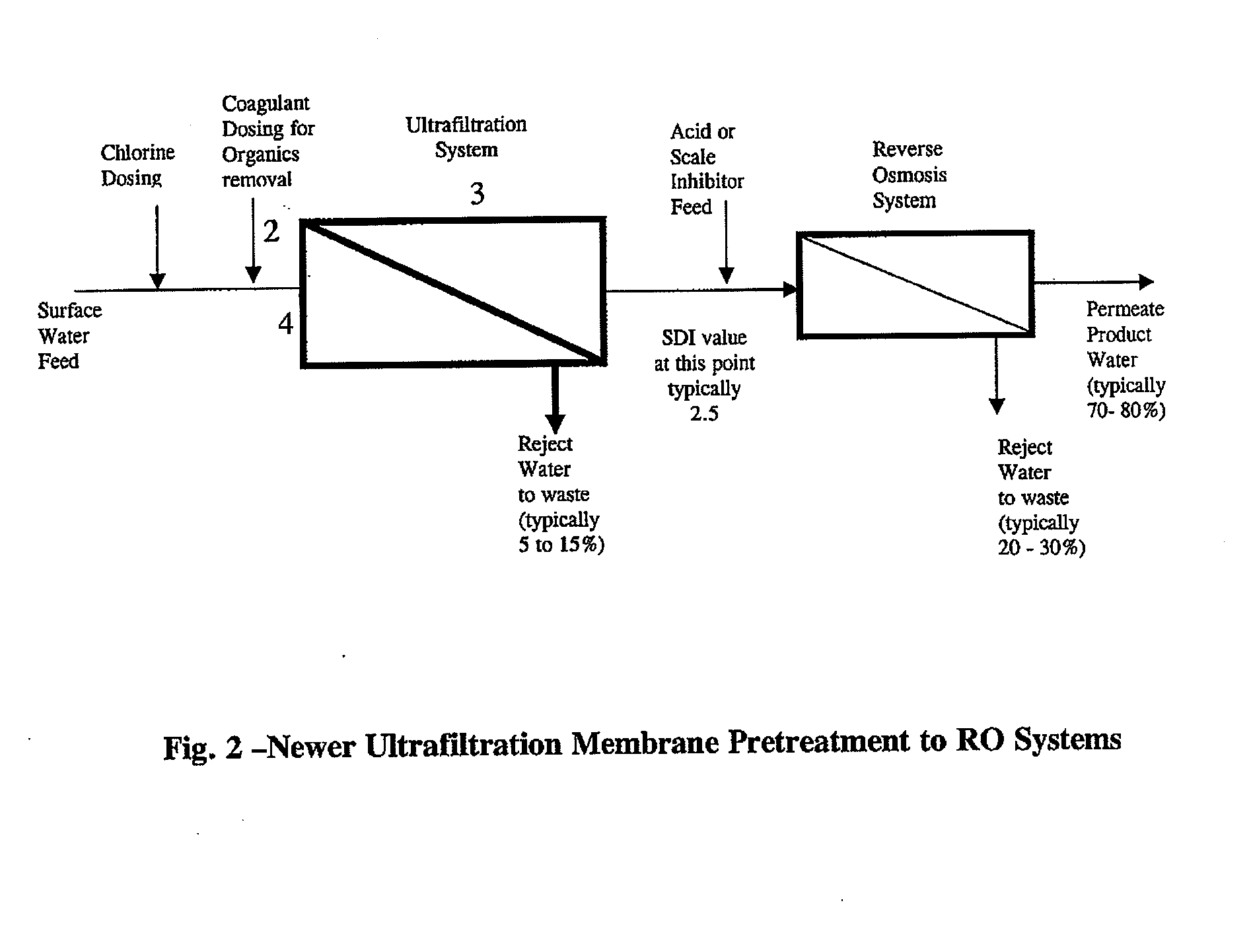Reduced fouling of reverse osmosis membranes
- Summary
- Abstract
- Description
- Claims
- Application Information
AI Technical Summary
Benefits of technology
Problems solved by technology
Method used
Image
Examples
example 1
[0157]The invention was demonstrated using a continuously flowing surface water supply from a river with naturally varying composition with respect to colloidal silica, organics matter, turbidity and silt density index (SDI) values. The river water supply pretreatment system contained softening and clarification using chlorine, aluminum sulfate and calcium hydroxide, followed by sand filtration and activated carbon. Prior to use, the water was filtered through a 1-liter cartridge filter of spiral wound cotton fiber to remove suspended solids matter. The filtered water was then passed at a flowrate of 12 BV / H alternately through two 1 liter cartridges, each containing 1 liter of the resin component and comprised of a 50:50 mixture of Purolite A501P, a macroporous anion resin of high porosity and high crush strength as described in U.S. Pat. No. 6,323,249 to Dale, et al., and Purolite A-860, a macroporous acrylic strong base anion resin, both resins manufactured by Purolite Intl. Ltd....
example 2
[0158]The invention was demonstrated by treating Philadelphia city water supply containing approximately 2 ppm silica, a pH of 8.2, total dissolved solids of approximately 210 ppm, and a total organic matter content raging from 1.5 to 2.5 ppm measured as total organic carbon (TOC). The water was artificially spiked with additional silica to achieve 16.8 ppm of silica in keeping with typical levels experienced in many part of the United States where ROs are used with attendant silica deposition problems. The resin component, comprising a 16 to 50 US mesh size sample of 1 liter of ArsenXnp (with experimental code of D9908) was installed in a cartridge and the water was passed through the resin component at a flowrate of 12 bed volumes per hour. The influent and effluent dissolved silica concentration was measured periodically until the breakthrough of silica in the effluent reached 50 percent of the influent value as displayed in FIG. 12. A mass balance was done to determine the fract...
example 3
[0159]Water from the blowdown water stream of a 2400 psig steam generator boiler was recovered and treated for reuse by passing through a 1 liter cartridge filled with 1 liter of the resin component comprising ArsenXnp (with experimental code D-9908) at a relatively flow rate of 57 bed volumes per hour. The blowdown water contained a very high concentration of silica at average of 77 parts per million and a relatively high pH of 9.5. The influent and effluent silica concentrations were measured periodically until the silica concentration in the effluent was approximately equal to that in the influent water. A mass balance was done to determine the fraction of silica that was loaded on the resin and this was determined to be approximately 6,000 milligrams of silica per liter of resin with a total of 161 liters of water treated as displayed in FIG. 13. The loading was 8.7 g SiO2 per liter of media and a silica breakthrough of approximately 60% at the end of the test.
PUM
 Login to View More
Login to View More Abstract
Description
Claims
Application Information
 Login to View More
Login to View More - R&D
- Intellectual Property
- Life Sciences
- Materials
- Tech Scout
- Unparalleled Data Quality
- Higher Quality Content
- 60% Fewer Hallucinations
Browse by: Latest US Patents, China's latest patents, Technical Efficacy Thesaurus, Application Domain, Technology Topic, Popular Technical Reports.
© 2025 PatSnap. All rights reserved.Legal|Privacy policy|Modern Slavery Act Transparency Statement|Sitemap|About US| Contact US: help@patsnap.com



